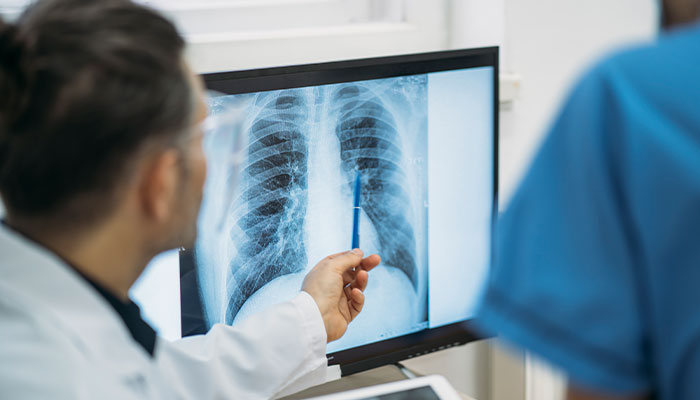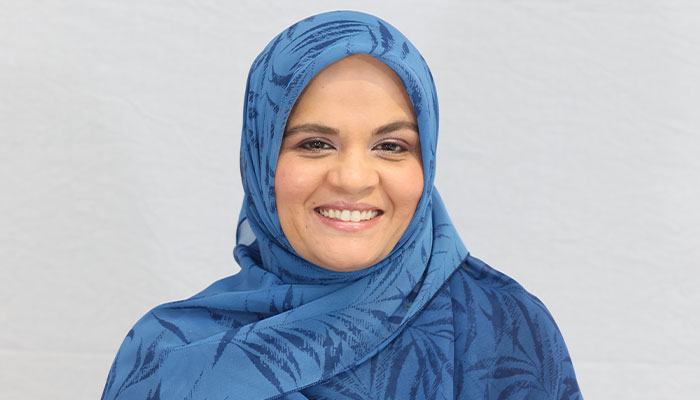When you arrive at a hospital in the future, Artificial Intelligence (AI) systems are likely to be there to assist with your initial scans and tests, but it will still be the human doctors and nurses who make the decisions and deliver your care.

Brave new world: The strength of AI in health lies in tasks like analysing large amounts of information quickly.
Many of the computerised systems we use every day, such as social media or home shopping apps, are programmed to assist the user. The social media algorithms see that you watch a lot of cat videos, and give you more cat videos. Your supermarket shopping app knows you’ve bought almond milk before, and it asks you at the checkout whether you’ve forgotten to buy it today.
True AI takes these building blocks and can learn to perform tasks for itself, but these smart systems are only as good as the information entered by humans.
AI can assist by narrowing down the information and making the alerts more precise, drawing from data not only on the drugs, but also about the patient.
Currently, one of the biggest uses of AI in healthcare is in radiology, with uses including scanning mammograms for abnormalities and preliminary scanning of x-rays.
Other systems are learning from health records to detect sepsis in hospitals or helping to identify skin cancers. These types of systems are reliant on information input from humans, on being ‘shown’ what to look for by experts.
Precision medicine
The strength of AI in health lies in tasks like analysing large amounts of information quickly, and so-called ‘precision medicine’, a new medical model that uses data about genetic, environmental and lifestyle factors to guide individual patient care, and supports – but does not replace – clinicians’ decision-making.
For example, chest X-rays are ordered for about half the patients who present to hospital emergency departments. The window for a radiologist to review the films and write a report is very small, and there can be delays in times of high demand.

Early warning system: One of the biggest uses of AI in healthcare is in radiology, including preliminary scanning of X-rays.
Emergency doctors often need to make decisions in advance of the radiologist’s report. To help counter this, a new AI system pre-scans the X‑rays and provides a preliminary report that gives the emergency doctor clues about the cause of a patient’s chest pain, breathlessness or injury allowing the doctor to provide urgent care in a timely manner.
An electronic prescribing system can tell a doctor when two drugs will have a negative interaction, but if it were to show every possible drug, the useful information is likely to be lost in a large number of irrelevant alerts.
- Breakthrough in keyhole heart valve replacement
- Please explain: How can we talk to kids about peer pressure?
AI can assist by narrowing down the information and making the alerts more precise, drawing from data not only on the drugs, but also about the patient.
AI can also be of great benefit for screening in conjunction with telehealth systems in remote areas where specialists are not able to visit regularly.
For example, in diabetic retinopathy screening, an AI system can be deployed to the local general practice for initial screening to save the patient having to travel long distances to see a specialist unless they need treatment.
Humans v machines
There is, however, a clear separation between what humans do well and what machines do well. For example, aged care is one area where there is a huge potential for AI to help meet increasing demand – but also one where we have to tread very carefully.
Smart homes can assist the elderly in caring for themselves by providing reminders for medications and other everyday tasks to maintain health and wellbeing, and chatbots and humanoid robots can provide companionship.
AI can assist by narrowing down the information and making the alerts more precise, drawing from data not only on the drugs, but also about the patient.
While AI like this can increase autonomy and wellbeing we need to ensure the use of such technologies preserves privacy as well as existing caring relationships with humans.
The role of a carer is not something that can be simply replaced by a machine. The person receiving care has a range of task-related needs, but they also have vital emotional and social needs that human carers meet so well and cannot be replaced by AI.
More time for patients
Nevertheless, the potential for AI in healthcare in the next five years is huge, and we will see more AI systems being deployed in health services around the world. AI that takes advantage of the latest summarisation and interactive chat technologies will help doctors and nurses easily access the most up-to-date and relevant clinical evidence and patient records.
By synthesising available data, AI will allow clinicians to devote more time to understanding the implications of the data for patient care. It will be particularly valuable when high volumes of records such as test results need to be examined and acted upon. Many mundane and burdensome clinical documentation tasks that encroach into the doctor-patient consultation space will be able to be delegated to AI.
Hospitals will also increasingly use AI-based risk prediction to improve the safety and efficiency of treatments for patients. Smart systems will also be used to optimise scheduling of treatments and procedures, and to streamline post-hospital care.
Australia is currently lagging behind the United Kingdom and the United States in terms of investment in AI for healthcare. We have put a lot of money into digitising health, but we could see further benefits from this if we could safely and effectively integrate AI into the mix. There is an urgent need to fund research to create and implement safer systems for AI in Australian healthcare.
We need not worry that humans will be replaced in healthcare provision, but over the coming years, we will learn more about how we can work together with AI for the best outcomes for patients.

Associate Professor Farah Magrabi (pictured) is a researcher at the Australian Institute of Health Innovation at Macquarie University. On 15 November 2021, she was named one of Telstra’s 2021 Brilliant Women in Digital Health.



